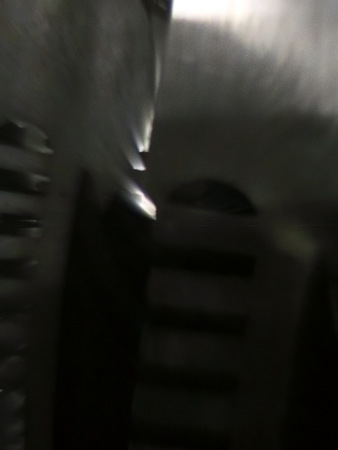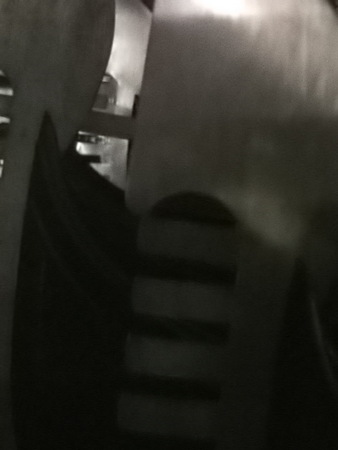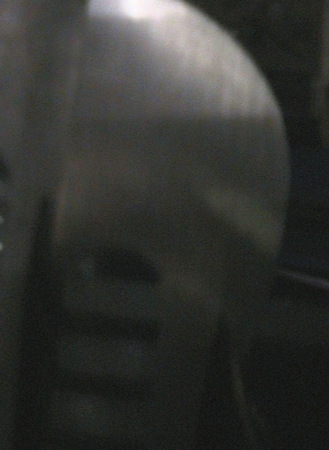Septima #2



Vladimir Tarasov. “Septima#2”, video. © Vladimir Tarasov
Vladimir Tarasov. “Septima#2”, video. © Vladimir Tarasov
Vladimir Tarasov. “Septima#2”, video. © Vladimir Tarasov
Moscow, 28.03.2009—26.04.2009
exhibition is over
Moscow Museum of Modern Art
Petrovka St., 25
Share with friends
Video
Artist ’s collection, Vilnus
For the press
«One who truly has seen Italy will never be unhappy.» — Johann Wolfgang Goethe
«Venice floated over the water.» — Boris Pasternak
The space of Venice is experienced through the labyrinth of its streets and canals, in the rhythmic succession — as if fingering a rosary — of its palazzo facades, where mature Renaissance meets youthful Baroque, in the endless whirl within the bounds of its seven districts: from San Marco and Dorsoduro towards Cannaregio and Castello. The city’s sacral eternity permeates every piazza and piazzetta, understating its centricity while at the same time emphasizing it, stressing the light sorrow of the disappearing nostalgic feeling in the insane ornamentality of San Marco. The space of Venice conjures up the image of an iconostasis, where one can discern Italian decorative battlements of the Kremlin walls in Moscow, harking back to the times when Italy and Russia were still sisters learning art from the same mother — Byzantium. Vladimir Tarasov’s «Septima» captures this eternal glimmering quality, paradoxical as a Zen koan, in the rocking of seven gondolas on the water, representing the structural imagery of Venice. The soul of Venice murmurs something through the mysterious splashing of the water, the non-linear vibrations of the boats, forming a magical seven-branch candelabrum, and resurrecting the nymphs’ whispering in the greenish canals, the color of old bronze. Gliding over these Lethe-like waters one can again experience the heavenly wholeness of world perception, inspiring dolphins to play in the lagoon and seagulls to gulp for air as they soar over the ornamental domes of San Marco.
The nature of water with its elusive gravity, its emotional voice, the phenomenon of its spaciousness, the geometry of its hidden proportions forming the number «seven» all convey in the artist’s work the acuteness of the desire to reach a place where the ideal is concentrated and centered. It knows how to contain in itself the fullness of the moment within the septima chord-in the seven sounds holistically integrated, empirically by chance, brilliantly unexpected-coming together in the same repeated canons. The meditative rocking of the gondolas and the acoustics of their sighs conceal the universal cultural memory of what has been irretrievably lost; they hide the personal unconscious of the artist living in the present. They maintain the ability of the Venice waters to promise a soon return so that every splash symbolizes a birth and a way towards where spirit and matter come into a dramatic collision but attain peace in the end under the sign of unity and accord. The contour of the sign fluctuates in its various images, acquiring a concrete locality, and connects with an even row of piles darkened from time and creating an unforgettable feature of the lagoon landscape outlining the fairway along the Grand Canal. They hold an unchanging image-an iconology of hope-mooring on its piles, gondolas in search of release. Their directional corridors, like the gondolier’s Neapolitan song, are filled with the harmonious realities of art, the only wonder that still visits this world even in our skeptical times. Its meanings pose a question, which was once voiced in the reflections of Jacques Derrida: «Why humbly yearn for the center — can’t we agree the sign does not correspond to the center?»
«Septima» is the «metaphysics of various localities» in Venice infused with endless strolls and whirls around the eternal city in the company of a beloved, «the all-powerful companion», to quote Andre Breton. The free topography of idling around, the energy of surrealistic roaming, and openly sensual spontaneity fill Vladimir Tarasov’s stochastic letter-musical score, which is projected onto the map of Venice. Modeling the sound and the image these neo-Baroque visual-acoustic scores contain an internal matrix of objective fortuities encoded within the city, and a common denominator with the number seven. Its restored mythology conceals an atavistic sensitivity to natural rhythms and partially reveals unique integral measurements of the fortuitous in the profound image of world order. It coordinates with the logarithmic scale of an expanding sequence, based on the principle of the spiraling shell of the Nautilus or, as the pilgrims used to call it: «a pearl boat», which in Vladimir Tarasov’s own story becomes a Venetian gondola. For a long time, the shiplet-gondola has floated in the artist’s installations. Connected by the thread of fundamental traditions, its image, from Noah’s Ark and Jonas’ ship launching from Jaffa and carried off by the stormy sea, to the Roman vessels on which St. Paul made his hazardous journey, has always meant fate itself. The number seven as a reference of objective contingency reveals its symbolic association with hermetic algebra hidden in the famous «green box» of Marcel Duchamp. The non-linear rhythmic components in the acoustics of the splashing gondolas — the poetic secret language of the video-installation — comes close to the alchemic proportions of the standards proposed by the «green box» with its magic division a/b where «a» is an exponent and «b» is a possibility, and the third symbol is represented by the «/» which both unites and divides them embodying Marcel Duchamp’s «sign of ideal coordination». As such, it carries within itself the axis of magic fortuity-the line-in relation to which occurs the oscillating movements of hidden meanings and, perhaps, destinies, as in the case of Vladimir Tarasov, of the life-giving Lethe-like waters of Venice.
In their floating sounds lives the liberation of the soul that already has had its fill of creative existence and now enters the realm of the ideal.
It leaves the Venice Lagoon that surrounds us with the endlessness of water and sky, holding in its memory this promised land, where amidst the universal silence only the voice of the human heart is heard, its rhythm, captured by the artist, together with the steadiness and fluidity of the phenomena of Venice.
Vitaly Patsuko


